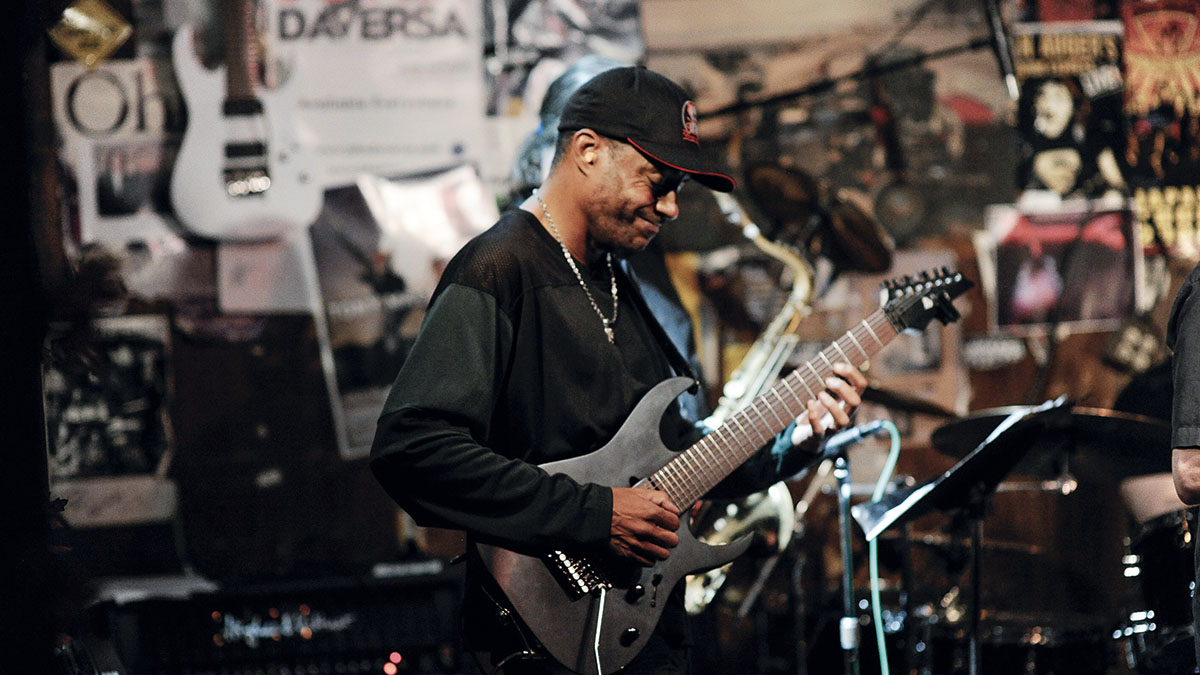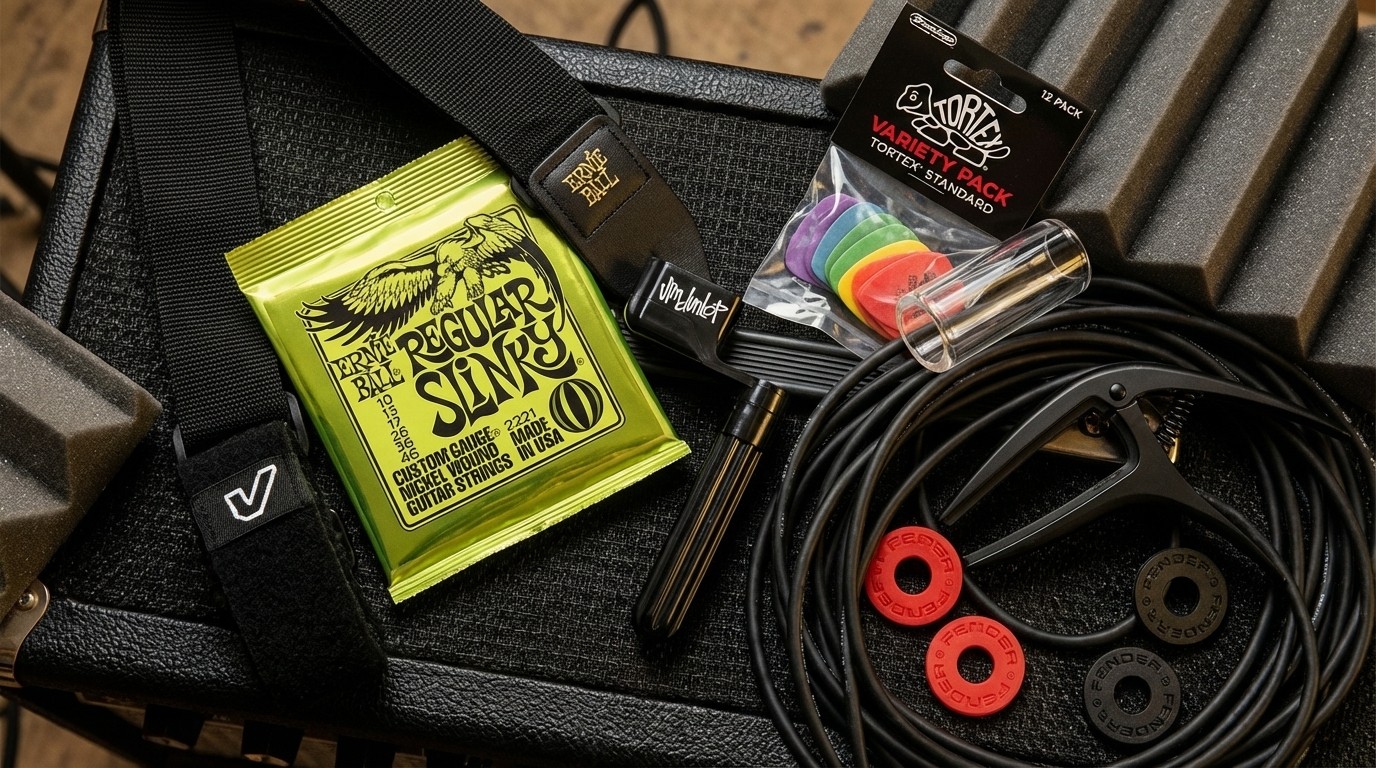5 soloing ideas you can learn from Tony MacAlpine
One of Mike Varney’s original Shrapnel shredders, MacAlpine marries speed and technicality with a strong melodic sensibility

Tony MacAlpine is one of the original Shrapnel Records legends with albums like Edge Of Insanity and Maximum Security showcasing his blend of speed, melody and neo-classical dexterity. Tony also toured as keyboardist and guitarist with Steve Vai and features on the must-see Live At The Astoria, London DVD.
This lesson's licks touch on the different eras of Tony’s playing and require excellent fretting accuracy, good alternate picking and a controlled sweep picking technique. Sweep picking can be tricky; our natural tendency is to pick each note separately and we tense up.
Instead, think of sweeping as a slow motion, relaxed strum across the strings, allowing the pick to hit the strings in even intervals on its natural path of travel, synchronizing your fretting fingers to play the notes as the pick reaches the relevant string. Fretting a string at a time also helps to keep unused strings muted.
Our first example combines sweep picking and tapping for a synth style arpeggio covering four octaves. This lick uses a downward A minor sweep across five strings, then a tap, followed by a three-string A minor sweep and tap, then a two-string sweep. This lick alone will cover most of your downward sweeping needs.
Example 2 is neo-classical shred in E Phrygian dominant. The 16th notes are matched with unbridled alternate picking, making this a perfect challenge to master string-to-string accuracy. Synchronize your pick and fingers and gradually speed up.
Here we combine sweeped arpeggios with alternate picking scales. Tony makes the transition between the two effortless. The first half is in D Dorian, and uses rhythmic phrasing through the scale; the second half moves up a semitone to an Eb Dorian based Bb Minor triad sweep. It’s a neat arpeggio superimposition over the Em11 chord to provide a Minor 9 color.
Our final example is an octave jumping tapping riff. It’s in 4/4 but there are some interesting rhythmic groupings hidden within that framework which should test your perception. It might be confusing at first, but practicing slowly and keeping the 16th notes even will lead to success.
All the latest guitar news, interviews, lessons, reviews, deals and more, direct to your inbox!
Once you have practiced with a metronome and built up the speed, try the licks over the backing tracks - feel free to be creative and make the licks your own.
Get the tone
Amp settings: Gain 7, Bass 6, Middle 7, Treble 7
Tony often uses a seven-string guitar but we’ve kept with six so everyone can have a go at these licks. We want a high-gain rock tone, retaining the fundamental note and not losing it in a sea of mush. Use the above settings on your amp, then add judicious amounts of pedal drive or distortion for sustain and power, but not flab out. Add reverb or delay to taste.
Example 1
Fret one note at a time in order to separate them. Start with your first finger at the 12th fret and hammer-on with fourth. Roll your third finger from fourth to third string at the 14th fret; finish the arpeggio with second and first fingers. Tap the notes while holding on to the pick with first finger and thumb throughout.
Example 2
Begin the lick with second, then third fingers on the third string, followed by first and second fingers on the second string. Maintain one-finger-per-fret throughout the scale to keep your hand movement economical. For the picking hand, start with a downstroke and use strict alternate picking throughout.
Example 3
Play the Em arpeggio shape using one finger at a time, while moving the pick across the strings in smooth motions, picking the strings along its natural path of motion. In bar 2 make sure you use the picking and pull-off directions denoted, in order to ensure the arpeggio in bar 3 begins with a downstroke.
Example 4
The first half of this lick is based in D Dorian mode (D-E-F-G-A-B-C) and for the second half the chord is a semitone higher, so we shift up to Eb Dorian (E-F-Gb-Ab-Bb-Cb-Db). Once you have tried this lick, have a go at improvising by moving up and down with the chord change.
Example 5
This tapped lick uses odd rhythmic groupings to move across the 4/4 bar lines. The first grouping is 19 notes long, repeated twice. This should bring you to the seventh note of bar 3 (tapped 14th fret), which begins the flowing ascending and descending string skipping part, finally looping back to the beginning.

Charlie Griffiths plays guitar in acclaimed prog-metal outfit Haken, and has a wealth of experience handling corporate and session gigs for genres as diverse as rock, heavy metal and pop. He has been a regular contributor to Total Guitar, Guitar Techniques and Guitar World for over fifteen years. His latest release is Tiktaalika - Gods of Pangaea which features stunning playing on, this time, 6-string guitars.
